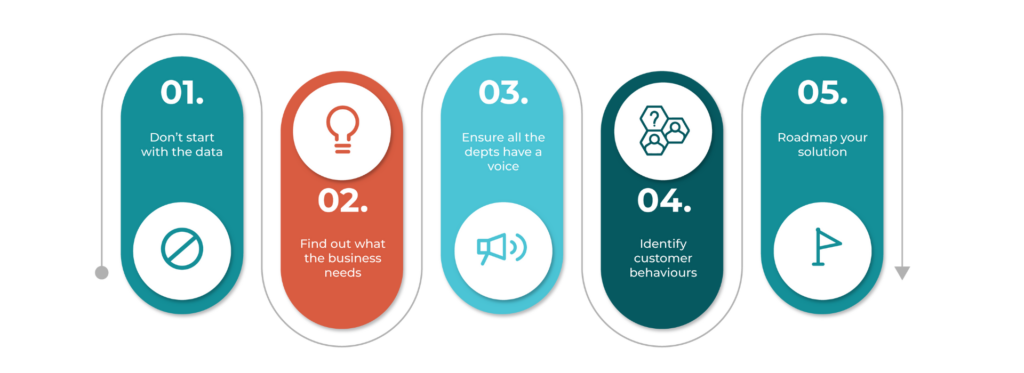The simple fact is that new commercial realities have ripped up the old marketing playbook and changed the traditional loyalty loop forever. So how can segmentation help you adapt instead of suffer? The minute you put your product in front of customers, they can immediately benchmark it elsewhere. Can they get it cheaper? Faster? Better? Will they get a better customer experience (CX) somewhere else?
Customers have more power than ever before...

Marketing agility will enable you to respond to these points of validation through targeted— even personalised—and highly relevant engagements. And this depends on customer insights. So more and more companies are building out customer databases that store all those breadcrumbs that people leave behind when they engage. As a result, there is often a huge amount of data just sitting there with no clear view on what to do with it. By trying to analyse everything, it becomes hard to see the wood for the trees a sort of ‘analysis paralysis’; if you will.

The biggest barrier to effective segmentation?
Put simply, it’s activation. Unfortunately, just because you have segmented your customers, it doesn’t mean you can now personalise everything you do. It needs to be actionable, not just for the Marketing Department, but right across the business. Customer touchpoints are affected by everyone from Product Design to Billing to Customer Service.
So we need to address three key challenges...

To address these challenges, we often need to switch mindsets. Instead of starting with the data you have, start with what you need to find out to match business objectives. That way you can prioritise elements of the segmentation to find valuable insights.
Segmentation must be a collaborative process. Involve everyone and give all your teams a voice. This not only ensures the segmentation matches your business goals but also that everyone has bought in to it from the beginning. (Invaluable when you release the segmentation three months later and need people to start acting on the insights it provides.)
Turning segmentation from a PowerPoint exercise into a valuable discovery process will help deliver customer value growth. Understanding consumer behaviours, opportunities for improving experiences, and whether you should focus on customer acquisition or retention give you a platform to design a ‘solution’.
A solution = action
Such a solution can include a series of shorter-term actions you can take – the tactical elements you need to tweak as you go along. Like updates to your products and offers, your communication platforms or your digital marketing. These smaller tweaks all add up to better customer experiences and interactions. But your solution should also be a roadmap for ongoing improvements that combine to influence the strategic side of your business. Things like your wider brand strategy, your business model and your growth strategy.
This is where hybrid segmentation – which sits across market/customer segmentation and database segmentation – can really help.
So what have we learnt?
Laying the foundations for segmentation activation starts with recognising that ‘every customer counts’. By which we mean that segmentation should include data from multiple different engagements.
We also know that segmentation needs to involve everyone and shift from the conceptual to the actionable. That way, everyone is focusing on customer needs and has a clear view of what they can do to make a difference.
With this buy-in from the business, you can ensure your segmentation makes the highest level of impact. In the short-term, from changes in everything from brand development to product planning to channel strategies to promotions. And, over the long-term, the future direction of your whole business.
5 foundations of activation


